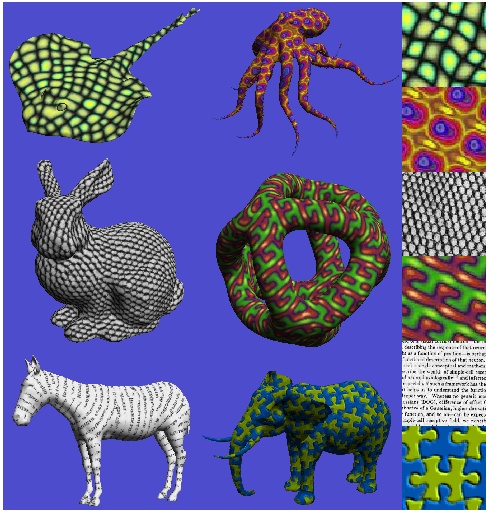
Many natural and man-made surface patterns are created by interactions between texture elements and surface geometry. We believe that the best way to create such patterns is to synthesize a texture directly on the surface of the model. Given a texture sample in the form of an image, we create a similar texture over an irregular mesh hierarchy that has been placed on a given surface.
Our method draws upon texture synthesis methods that use image pyramids, and we use a mesh hierarchy to serve in place of such pyramids. First, we create a hierarchy of points from low to high density over a given surface, and we connect these points to form a hierarchy of meshes. Next, the user specifies a vector field over the surface that indicates the orientation of the texture. The mesh vertices on the surface are then sorted in such a way that visiting the points in order will follow the vector field and will sweep across the surface from one end to the other. Each point is then visited in turn to determine its color. The color of a particular point is found by examining the color of neighboring points and finding the best match to a similar pixel neighborhood in the given texture sample. The color assignment is done in a coarse-to-fine manner using the mesh hierarchy. A texture created this way fits the surface naturally and seamlessly.
Six textured models and the texture samples used.
Coarse-to-fine texture synthesis process.
User-created vector field.
Really big picture of puzzle elephant.
Really big picture of intersecting tori.
Really big picture of octopus.
Go to Greg Turk's Home Page.
Any opinions, findings, and conclusions or recommendations expressed in this material are those of the author(s) and do not necessarily reflect the views of the National Science Foundation.